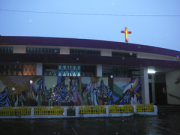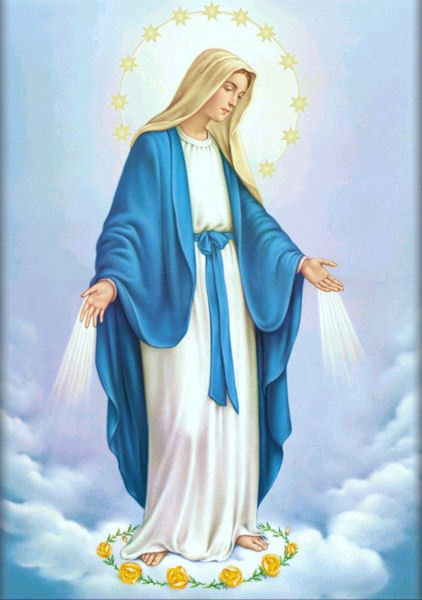
Our Lady of Grace

Our Lady of Grace (Italian: Madonna delle Grazie or Nostra Signora delle Grazie) or St Mary of Graces (Italian: Santa Maria delle Grazie) is a devotion to the Virgin Mary in the Roman Catholic Church. Churches with the dedication of Our Lady of Grace often owe their foundation to thankfulness for graces received from the Virgin Mary, and are particularly numerous in Italy, India, Australia, United States, France and the Italian-speaking region of Switzerland.
Our Lady of Grace is the patron saint of the diocese of Faenza. According to a legend, in 1412, Mary appeared to a local woman. Mary was holding broken arrows symbolizing protection against God‘s wrath and promised an end to the plague. Faenza Cathedral has a chapel dedicated to Our Lady of Grace, while residents often place ceramic titles with the image on their homes.
There are many thousands of paintings deciated to Our Lady of Grace throughout Italy. A prominent one can be seen at Grosseto Cathedral (by Matteo di Giovanni, 1470), in the church of San Lorenzo at Poggibonsi, and in the cathedral of Perugia. Unlike the Madonna del Soccorso or the Madonna della Misericordia, the Madonna delle Grazie, Our Lady of grace has no particular iconography, although many of these paintings represent just the head or bust of the Virgin. A full figure image of Our Lady of Grace with the possibly unique attribute of having both the Madonna’s breasts fully exposed and showering lactating grace down upon souls in purgatory was painted in Ravello, Italy, by bequest of Don Pietro Marciano (1572), and placed in a chapel he had built to hold it at Punta Paradiso, overlooking Minori. The icon was restored in 2014.
There are statues of Our Lady of Grace by Antonello Gagini at Chiesa dell’Osservanza, Catanzaro and the church of Madrice Vecchia, Castelbuono, and by Vincenzo Gagini at the Church of San Martino, Randazzo. Another statue of Our Lady of Grace sculpted from wood by Mariano Gerada could be found in Żabbar a Maltese town dedicated to Our Lady of Grace, Il-Madonna tal-Grazzja, as known by the locals.